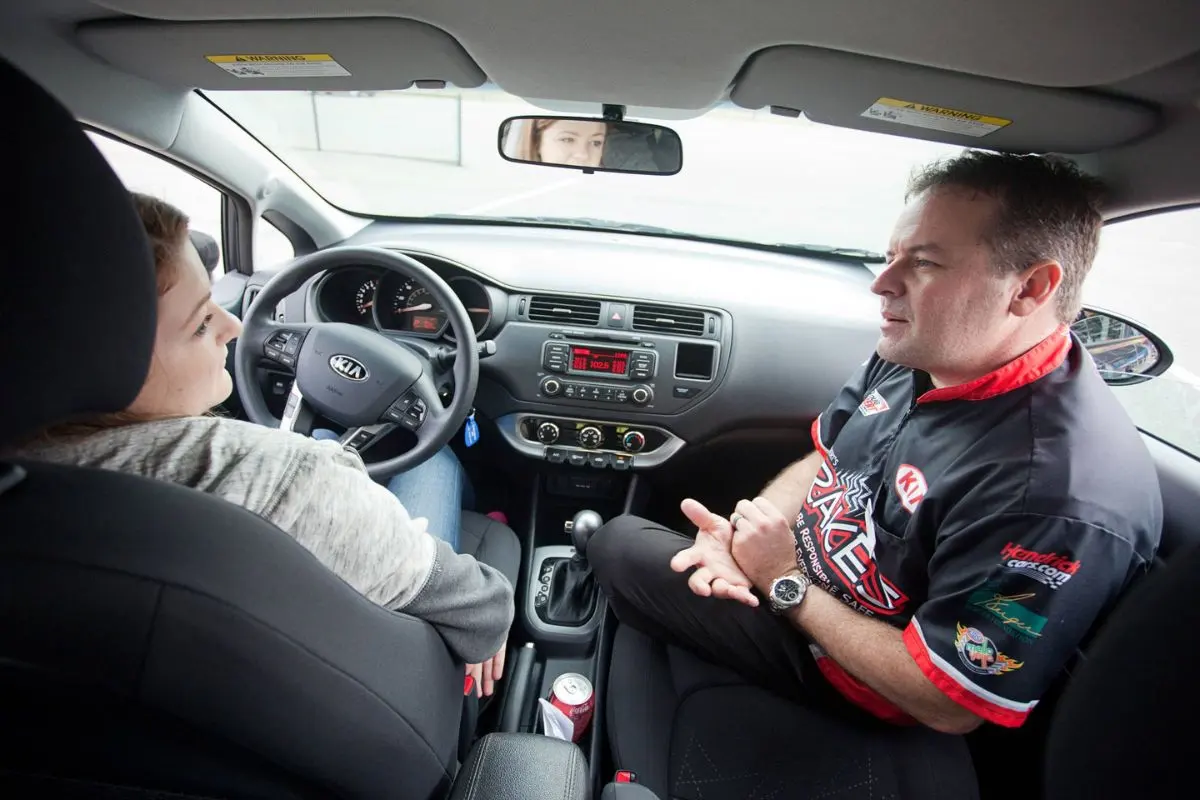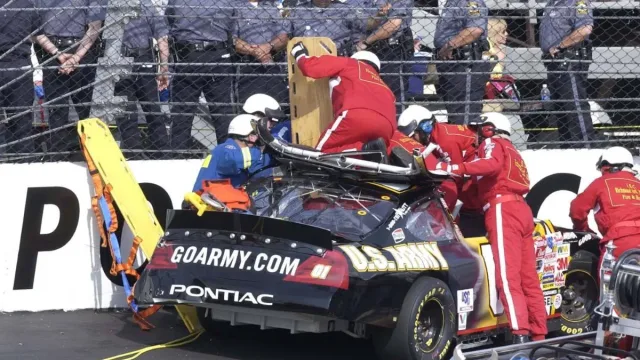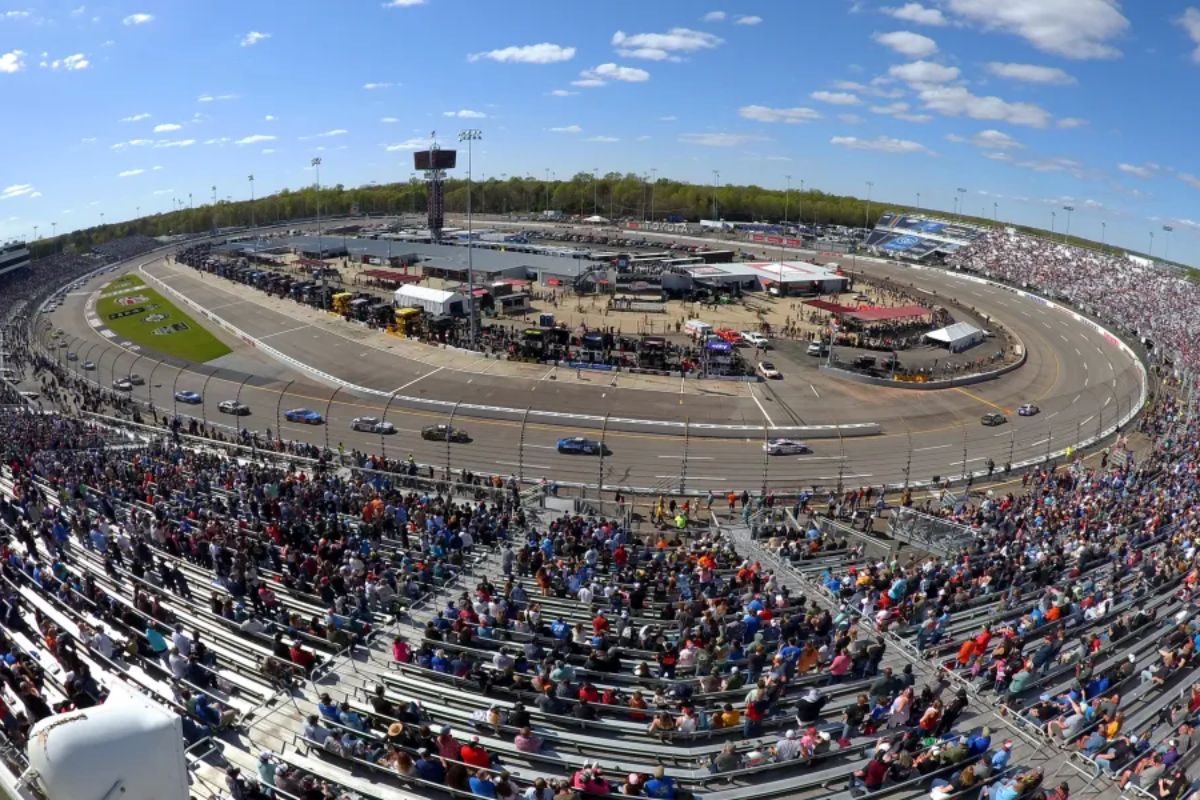Why NASCAR Turned Its Back on Jerry Nadeau: The tragic crash that ended Jerry Nadeau’s promising NASCAR career in 2003 serves as a depiction of the sport’s inherent risks. Occurring during a practice session at Richmond Raceway, Nadeau experienced a violent impact resulting in severe injuries, including a traumatic head injury that placed him in a coma. This incident, exacerbated by the lack of SAFER barriers installed until days later, raised considerable safety concerns within NASCAR.
Key Highlights
- Jerry Nadeau’s promising NASCAR career ended abruptly due to a catastrophic crash at Richmond Raceway during a practice session in 2003.
- The crash occurred just days before the installation of SAFER barriers, highlighting the urgent need for improved safety measures in NASCAR.
- Nadeau suffered severe injuries, including a traumatic head injury, which led to a lengthy coma and ultimately ended his racing career.
- The incident sparked significant discussions within the NASCAR community about driver safety and the risks associated with the sport.
- Nadeau’s post-crash struggles reflect the emotional and psychological toll of losing one’s identity as a professional driver, emphasizing a lack of support from NASCAR.
Jerry Nadeau’s Rise in NASCAR
Jerry Nadeau’s ascent in NASCAR was marked by a blend of talent, resolve, and a relentless pursuit of excellence that captured the attention of fans and industry insiders likewise.
Emerging from the grassroots of karting, Nadeau honed his skills through competitive circuits, particularly the WKA Grand National championship and the Skip Barber Eastern Series. These formative experiences laid a robust foundation for his shift to professional racing.
Nadeau made his NASCAR debut in 1995, competing in the Busch Series, where his tenacity and skill quickly became apparent. By 1998, he graduated to the Cup Series, joining Elliott-Marino Racing as a full-time driver. This elevation was a demonstration of his growing reputation as a formidable competitor.
However, it was his tenure with Hendrick Motorsports in 2000 that truly marked the pinnacle of his career. In a field dominated by legends, Nadeau captured his initial Cup Series victory at Atlanta by edging out Dale Earnhardt Sr. by a mere 1.3 seconds. This moment not only validated his potential but also thrust him into the spotlight, igniting high expectations for his future.
Jerry Nadeau won the 2000 NAPA 500 at Atlanta 24 years ago today. 🏁
Nadeau led the most laps and beat Dale Earnhardt by 1.338 seconds to earn his first Winston Cup win. #FirstTimeWinner 🏁 pic.twitter.com/ro64yUyROi
— NASCAR Legends (@LegendsNascar) November 21, 2024
Despite the promise of a burgeoning career, the unpredictable nature of NASCAR loomed large. Nadeau’s path was abruptly altered by a catastrophic crash, a glaring reminder of the precarious balance between ambition and the inherent dangers of motorsport.

His story serves as both an inspiration and a cautionary tale within the annals of NASCAR history, summarizing the fine line that drivers must navigate in their pursuit of greatness.
The Fateful Crash at Richmond Raceway
The path of Nadeau’s promising career took a devastating turn during a practice session at Richmond Raceway in 2003, emphasizing the inherent risks faced by NASCAR drivers. At 33 years old and racing for MB2 Motorsports, Nadeau appeared poised for a successful season. However, this optimism was abruptly shattered when he crashed into a hard concrete wall at a staggering force of 128G.
This incident occurred just days before Richmond was set to install SAFER (Steel and Foam Energy Reduction) barriers, a safety innovation prompted by the tragic death of Dale Earnhardt Sr. at Daytona in 2001.
The timing of the barrier installation highlights a grim irony; Nadeau’s accident exemplified the perilous nature of NASCAR racing, where split-second decisions can have life-altering consequences. In a sport where speed is paramount, the absence of adequate safety measures can transform a simple practice into a catastrophic event.
Nadeau’s crash was not merely a personal tragedy but a vivid reminder of the vulnerabilities inherent in motorsport. The severity of his injuries would ultimately end his racing career, casting a long shadow over the sport and raising questions about safety protocols.
The Impact of the Crash and Its Aftermath
Although the physical injuries sustained by Nadeau in the crash were severe, the psychological and emotional ramifications proved likewise, if not more, substantial. The traumatic head injury left him in a coma for several weeks, during which time he was stripped of his identity as a professional race car driver. Upon awakening, he faced an existential crisis compounded by his physical limitations. Nadeau’s neurosurgeon, Dr. Petty, poignantly urged him to contemplate a new profession, summarizing the gravity of his situation.
“Jerry, I love you like a son. Do me a favor and choose a new profession.” – Dr. Petty
This shift from a life defined by speed and competition to one fraught with uncertainty was disorienting. Nadeau reflected on the formidable challenge of relearning basic skills such as walking and talking; yet, the more profound loss was that of his racing career, which had been his entire world.
In his own words, he articulated a profound struggle: “What do I do now that I can no longer do what makes me me?” This question highlights the psychological toll of losing not just a career, but also a core aspect of his identity.
“I had to learn to walk and talk again, and while I got those abilities back, I lost the thing that defined my life: I was no longer able to race.”
“Being alive is definitely a gift, but it created a challenge for me, one that felt (and sometimes still feels) insurmountable: What do I do now that I can no longer do what makes me me?” -Jerry Nadeau
The implications of Nadeau’s crash extend beyond his personal plight; they reverberate throughout the NASCAR community, drawing attention to the precarious nature of motorsport safety. While he grapples with the challenge of redefining his life, the crash serves as a striking reminder of the risks inherent in racing and the resilience required to navigate life after such a traumatic event.
Nadeau’s Current Life and NASCAR’s Lack of Support
Rebuilding a life after the devastating crash has been a complex expedition for Nadeau, marked by both resilience and frustration. Over the past two decades, he has made commendable efforts to remain connected to the racing world, operating a shop on his property and serving as an instructor at the PTC Training Academy in Tennessee. This commitment to nurturing new talent and sharing his deep-seated knowledge of racing highlights his enduring passion for the sport.
Despite these endeavors, Nadeau’s narrative is tinged with a profound sense of neglect, particularly from NASCAR, the very organization that once thrust him into the limelight. His attempts to engage with the sport—his calls unanswered and pleas for assistance ignored—speak volumes about the lack of institutional support for drivers who face life-altering challenges.
At 54, Nadeau continues to embody the spirit of racing, a reflection of his character and dedication. However, the absence of recognition from NASCAR is a glaring oversight that casts a shadow on the sport’s commitment to its athletes.
The racing community often celebrates its heroes, but in this case, a notable figure remains sidelined. A public acknowledgment or a gesture of support from NASCAR would not only honor Nadeau’s contributions but also serve as an essential reminder of the responsibilities the sport has towards its drivers, especially those who have faced adversity.
News in Brief: Why NASCAR Turned Its Back on Jerry Nadeau
The tragic incident involving Jerry Nadeau serves as a poignant reminder of the inherent risks associated with NASCAR. While Nadeau’s promising career was abruptly halted, the repercussions of the crash extend beyond the individual, emphasizing systemic issues within the sport regarding driver safety and support.
The lack of extensive assistance for injured drivers highlights the need for continued advocacy and reform within NASCAR, ensuring that those who dedicate their lives to racing receive the necessary care and resources post-incident.
ALSO READ: NASCAR Pace Car Spins and Crashes at Phoenix Raceway—How Did This Happen?


